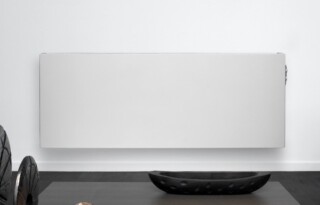When choosing the perfect radiator, you will need to bear in mind a variety of different factors: the ideal shape that is best suited to your design or style, the place where the radiator is to be fitted and its actual heat output capacity. This article takes a closer look at each of these aspects.
Radiators: a very comprehensive model range
Radiators come in different types, shapes and sizes: designer radiators, bathroom radiators, electric radiators, radiant panel heaters or aluminium radiators. So picking out the right radiator for you, i.e. the radiator that meets your requirements in terms of design and heat output, from what is a comprehensive offering, can be a little daunting.
Choosing a radiator: which factors to look out for?
Which design do I like most?

Unlike underfloor heating, radiators are visible features around your home interior. This explains why a lot of people tend to go with a model that best matches the existing decor of a particular room. Nowadays, radiators come in a wide selection of models, shapes, materials and colours. For the bathroom, vertical towel radiators are very popular. People who go in for a more classic style are often seen to go for column radiators. Plinth radiators take up the least amount of space whilst still delivering the heat output required.
What heat output do I need?
Design is obviously important, but this applies in equal measure to the radiator's heat output. Do you need high heat output? Or can you do with less? In this respect, it is the size of the room to be heated that is the deciding element.
Calculating the size or volume of the room is easy: simply multiply the length, the width and the height of the room. Here is a straightforward example: a room that measures 3 metres in height, 6 metres in length and 5 metres in width has a volume of 90 cubic metres (6 x 5 x 3).
The radiator's actual heat capacity is obtained by multiplying the room volume by the number of watts needed to ensure the space is heated to optimum effect (for residential dwellings, on average this is anywhere between 75 and 85 watt per room).
Tip: If your home is properly insulated, you can deduct between 10% and 25% of the heat capacity as calculated to maintain the same level of heat output. If your home is poorly insulated, you will need to raise the required heat capacity as calculated by 15%.
Where do I fit my radiator?
Nobody likes wasting energy, which is why it is important that you carefully choose the location where you will have your radiators fitted, so the heat spreads evenly across the entire room. For L-shaped rooms, it is advisable to have two radiators installed.
Tip: Have your radiators fitted underneath the windows or just next to the doors. These are the places where most of the cold enters your home.
